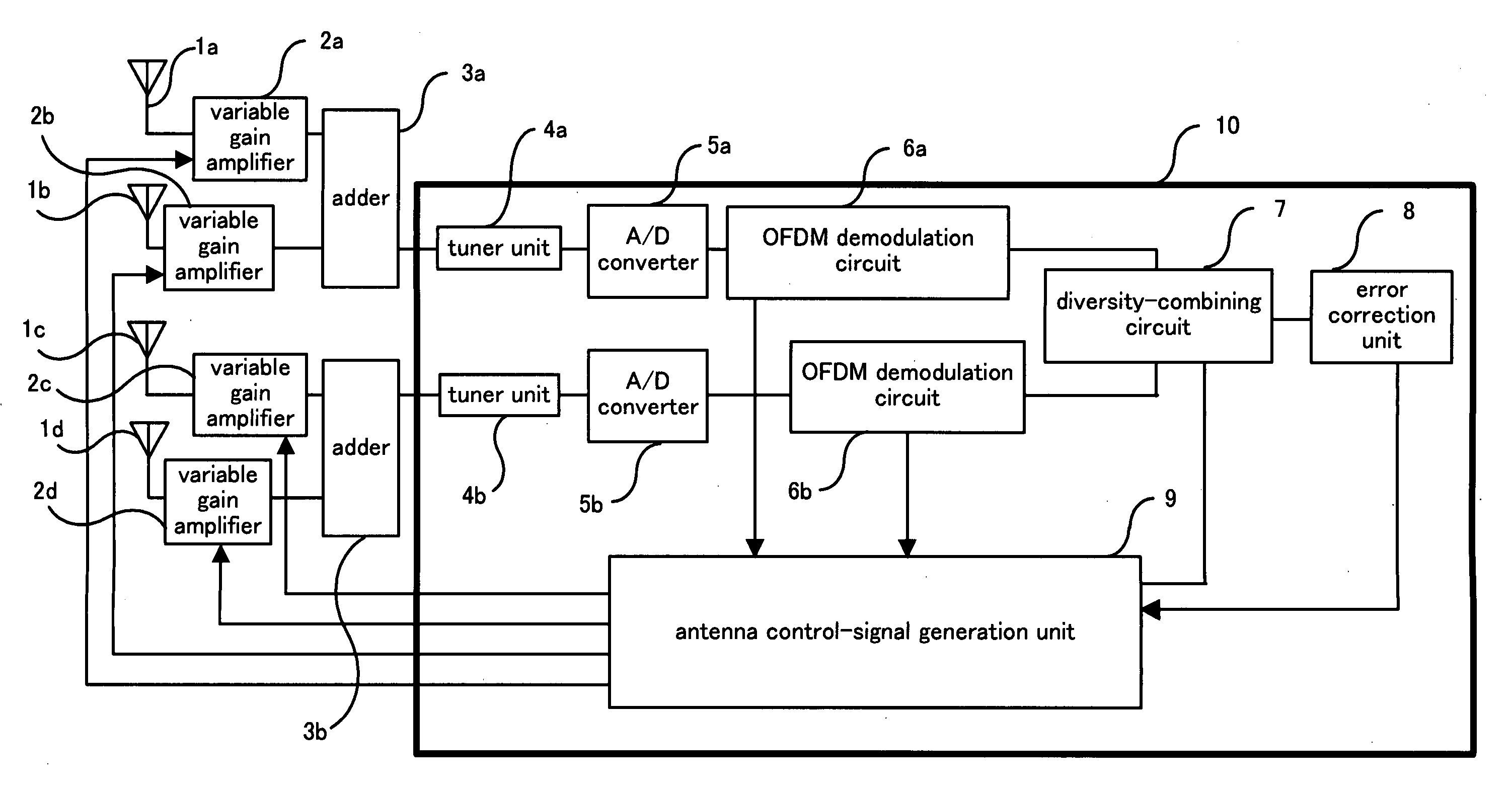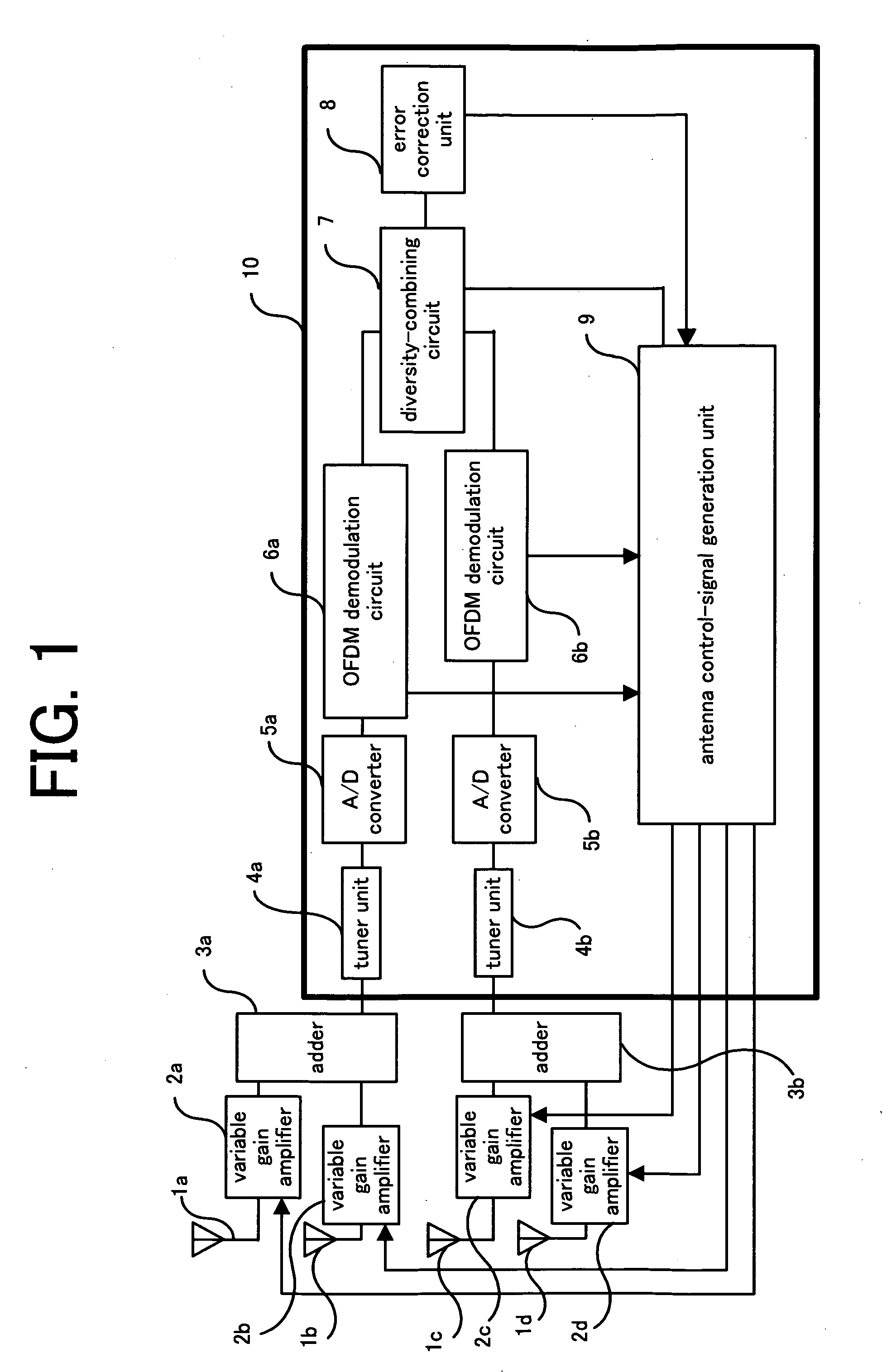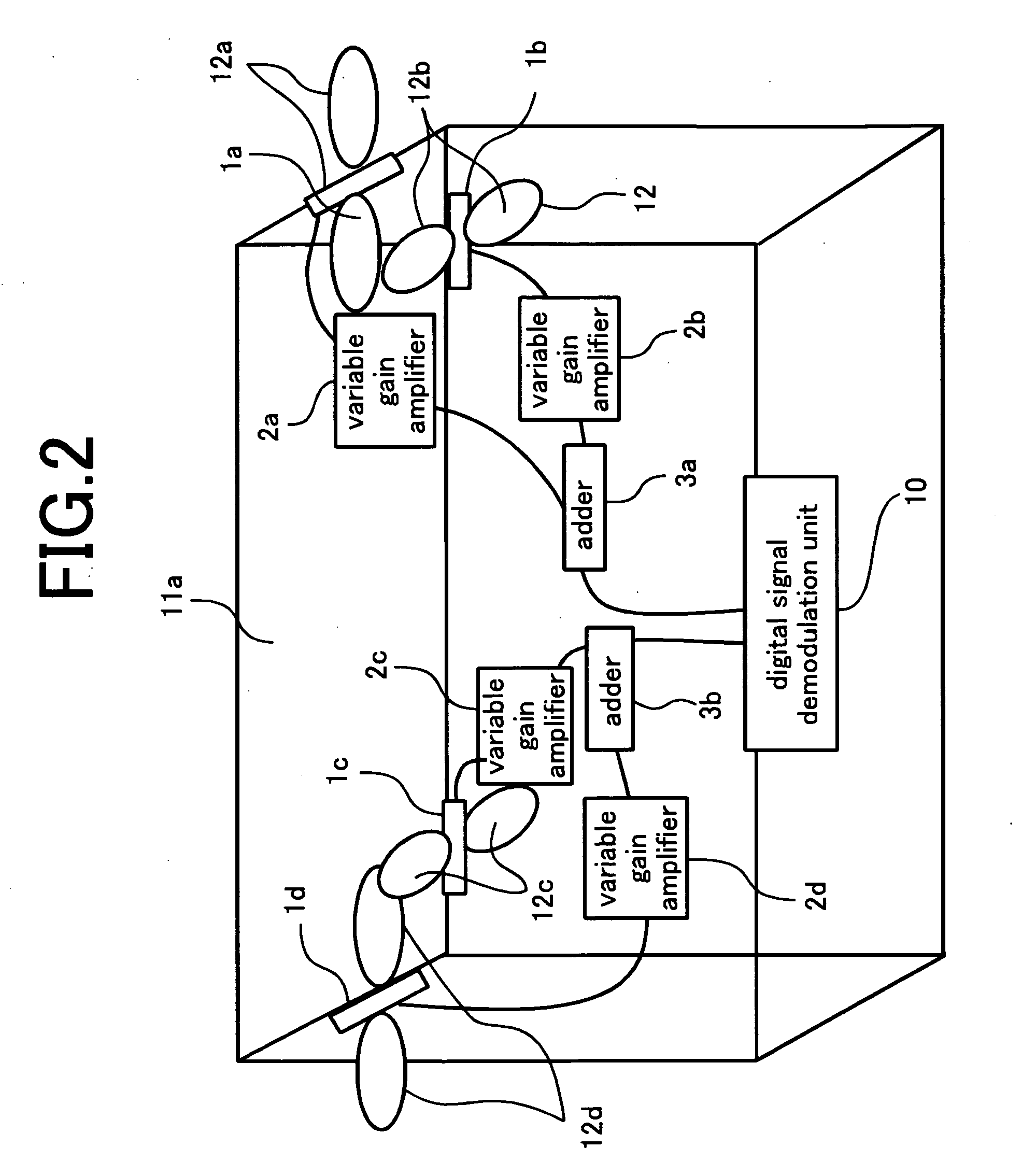Diversity receiver
a receiver and diversity technology, applied in the field of diversity reception, can solve the problems of limiting the output power of the transmitter station, requiring a rerouted feeder cable, and no pictures and sounds at all, and achieve the effect of high diversity gain
- Summary
- Abstract
- Description
- Claims
- Application Information
AI Technical Summary
Benefits of technology
Problems solved by technology
Method used
Image
Examples
embodiment 1
[0037]FIG. 1 is a diagram illustrating an overall configuration of a diversity receiver according to Embodiment 1 of the present invention.
[0038]Referring to FIG. 1, antennas 1a and 1b, which are a plurality of first antennas that receive terrestrial digital broadcast radio waves, are connected to variable gain amplifiers 2a and 2b, respectively, for varying gains of the antennas. The antennas 1a and 1b are such dipole-antennas or pole-antennas that have a figure-eight directional radiation pattern, to have a sufficient reception sensitivity for terrestrial digital broadcast radio waves coming from two directions opposite to each other. The variable gain amplifiers 2a and 2b include attenuators, for example, composed of pin-diodes.
[0039]Incidentally, radio waves broadcast from terrestrial digital broadcast stations are basically polarized horizontally whereas vertical polarized components may sometimes be produced under the influences of electromagnetic environments such as building...
embodiment 2
[0088]While in Embodiment 1 of the invention a diversity receiver has been explained on the case of the antennas having a figure-eight directional radiation pattern, directional antennas having only one direction of radiation pattern may be used.
[0089]FIG. 7 is a perspective view seen from the rear of a television, and illustrates a configuration example of a diversity receiver incorporated in the television in a case of using directional antennas, according to Embodiment 2 of the invention. In addition, since the same reference numerals as those in FIGS. 1 and 2 denote the same or equivalent components, their explanations will be omitted.
[0090]As shown in FIG. 7, seen from the rear of the television, an antenna le of a first branch is arranged on the right lateral side of the television such that its directional radiation pattern 12e is oriented in the right direction in FIG. 7. Accordingly, for a terrestrial digital broadcast radio wave propagating from the right to the left on FI...
embodiment 3
[0100]In Embodiment 1 and Embodiment 2 of the invention, a diversity receiver has a plurality of branches configured with variable gain amplifiers that control gains of a plurality of respective antennas and with adders that add outputs of each variable gain amplifiers so as to diversity-combine demodulated signals of the branches. In Embodiment 3, a diversity receiver has a branch, instead of a branch configured with variable gain amplifiers and an adder, configured with phase combiners that combine received signals of a plurality of antennas with a fixed phase to output a plurality of phase-combined signals and configured with a selection circuit that selects one phase-combined signal from the plurality of phase-combined signals. That configuration can also enhance gains after the diversity combining and bring about a stable reception.
[0101]FIG. 9 is a diagram illustrating an overall configuration of the diversity receiver according to Embodiment 3 of the invention. In addition, s...
PUM
 Login to View More
Login to View More Abstract
Description
Claims
Application Information
 Login to View More
Login to View More - R&D
- Intellectual Property
- Life Sciences
- Materials
- Tech Scout
- Unparalleled Data Quality
- Higher Quality Content
- 60% Fewer Hallucinations
Browse by: Latest US Patents, China's latest patents, Technical Efficacy Thesaurus, Application Domain, Technology Topic, Popular Technical Reports.
© 2025 PatSnap. All rights reserved.Legal|Privacy policy|Modern Slavery Act Transparency Statement|Sitemap|About US| Contact US: help@patsnap.com



